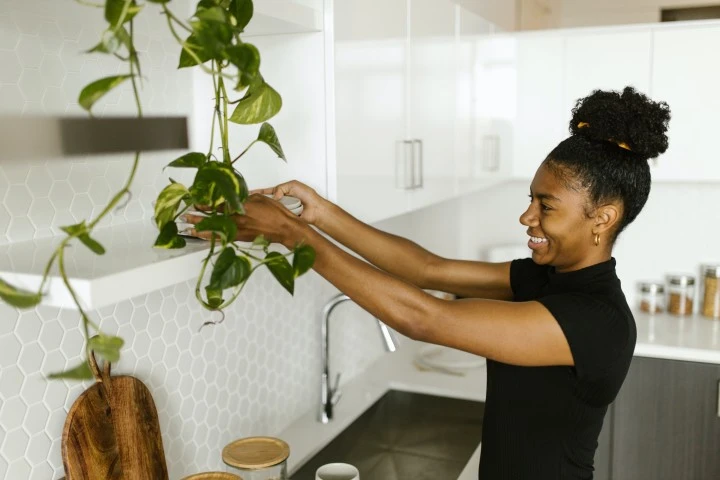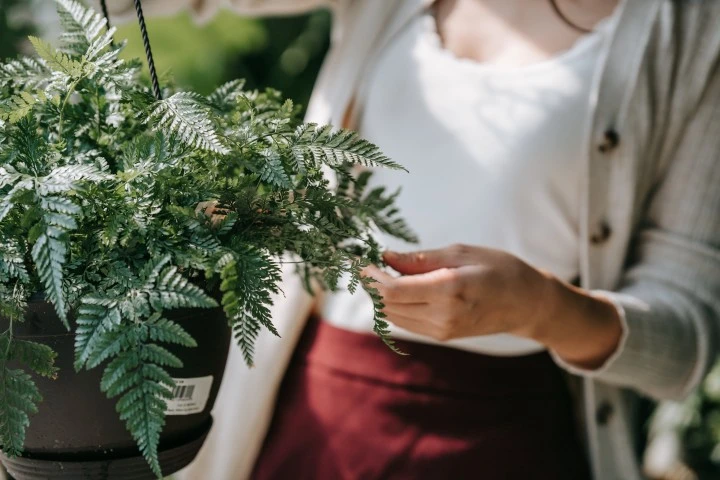
As urban living spaces continue to shrink, a new trend has taken root, literally. Indoor gardening has blossomed into a popular hobby, and one concept has soared to new heights—vertical gardening.
This article delves into the fascinating world of indoor vertical gardening. Explore its rise in popularity and the myriad benefits it offers. Whether you’re a gardening enthusiast looking to bring the outdoors inside or a complete newcomer intrigued about cultivating your own green haven, this guide aims to help you set you on a path to botanical success.
Benefits of Indoor Vertical Gardening
Indoor vertical gardening is a method of growing plants upward. Unlike traditional horizontal gardening, it uses vertical spaces, such as walls, shelves, or hanging structures, instead of beds or on the ground. In this approach, plants are arranged in a way that maximizes the use of available vertical space, creating a visually appealing and efficient way to cultivate greenery indoors.
Indoor vertical gardening is popular in urban environments where outdoor space may be limited. It offers several benefits, including space optimization, improved air quality, and the aesthetic enhancement of indoor spaces.
Additionally, vertical gardening allows individuals to cultivate a variety of plants, ranging from herbs and flowers to vegetables and succulents, without requiring large horizontal plots of land.
Selecting the Right Plants
Indoor vertical gardening offers a diverse range of plant options, providing flexibility for gardeners to cultivate various types of greenery in a limited space. Here are some popular plant choices for indoor vertical gardens:
- Herbs. Herbs like basil, mint, and chives are excellent candidates for indoor cultivation. Their smaller size allows you to cultivate a variety of herbs in containers, on windowsills, or in vertical gardens.
- Small vegetables. Some small vegetables that are well-suited for vertical indoor gardening include radishes, cherry tomatoes, lettuce, and spinach.
- Mushrooms. While mushrooms have different requirements compared to traditional herbs or plants, they can thrive in controlled indoor environments. Shiitake (Lentinula edodes) is a popular and flavorful mushroom variety that adapts well to indoor cultivation. Learn more about Shiitake mushrooms before securing spawns or cultures from a reliable supplier.
When choosing plants for your indoor vertical garden, consider factors such as the available light, humidity levels, and the size of the vertical structure. Select plants that have similar care requirements to make maintenance more manageable.
Additionally, compact or dwarf varieties are often well suited for vertical gardening, allowing for better space utilization and easier management.
Choosing the Ideal Location
Position your vertical garden near south-facing windows to maximize exposure to natural sunlight. East or west-facing windows can also provide good light, while north-facing windows may offer lower light levels. While plants need good air circulation, avoid placing your vertical garden in areas with strong drafts, as this can stress the plants.
Make the most of unused vertical spaces, such as walls, empty corners, or room dividers. Utilizing vertical structures like wall-mounted shelves or hanging pockets allows you to optimize space.

Setting Up Your Vertical Garden
Vertical gardening systems come in various forms, each designed to maximize the use of vertical space in a practical and visually appealing way. Here are some common types of vertical gardening systems:
- Pocket System. These are fabric or felt pockets attached to a vertical frame or mounted directly on a wall. Each pocket can hold a plant, creating a lush and textured wall of greenery.
- Modular Systems. These are modular panels with built-in containers or pockets that can be arranged in various configurations to create living walls.
- Hanging Planters. Utilize hanging baskets, pots, or containers suspended from ceilings or overhead structures. This allows plants to dangle freely, creating an eye-catching display.
- Ladder Gardens. A-frame or leaning ladders with shelves or rungs can hold potted plants, creating a vertical garden with a rustic or contemporary look.
- Screens. Vertical screens or trellises provide support for climbing plants like vines and creepers. This system encourages vertical growth and adds a decorative element to your garden.
Choose a vertical gardening system based on your available space, aesthetic preferences, and the types of plants you want to grow. The versatility of these systems makes it possible to create beautiful and functional vertical gardens in a variety of indoor and outdoor settings.
Your Green Journey Awaits!
As with any type of gardening, indoor vertical gardening comes with its own set of challenges. But when you’re equipped with the right tools, tips, and knowledge, growing your own plants and produce—even in the comforts of your home—is completely possible. Have fun on your journey!
We hope you found this blog post on Indoor Vertical Gardening: Tips and Tricks to Get Started useful. Be sure to check out our post on Steps to Organizing a Small Apartment Kitchen for more great tips!
Have Experience in the Moving Industry? Want an Additional Income Stream? Work With All Around Moving!
Our unique Work With Us program gives the opportunity to experienced moving consultants to run their own Moving Consultant business from anywhere in the United States. Click here to learn more.





